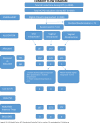Oral misoprostol, low dose vaginal misoprostol, and vaginal dinoprostone for labor induction: Randomized controlled trial
- PMID: 31923193
- PMCID: PMC6953875
- DOI: 10.1371/journal.pone.0227245
Oral misoprostol, low dose vaginal misoprostol, and vaginal dinoprostone for labor induction: Randomized controlled trial
Erratum in
-
Correction: Oral misoprostol, low dose vaginal misoprostol, and vaginal dinoprostone for labor induction: Randomized controlled trial.PLoS One. 2024 May 20;19(5):e0304233. doi: 10.1371/journal.pone.0304233. eCollection 2024. PLoS One. 2024. PMID: 38768081 Free PMC article.
Abstract
Objective: To compare effectiveness and safety of oral misoprostol (50 μg every four hours as needed), low dose vaginal misoprostol (25 to 50 μg every six hours as needed), and our established dinoprostone vaginal gel (one to two mg every six hours as needed) induction.
Materials and methods: Consenting women with a live term single cephalic fetus for indicated labor induction were randomized (3N = 511). Prior uterine surgery or non-reassuring fetal surveillance were exclusions. Concealed computer generated randomization was stratified and blocked. Newborns were assessed by a team unaware of group assignment. The primary outcome was time from induction at randomization to vaginal birth for initial parametric analysis. Sample size was based on mean difference of 240 minutes with α2 = 0.05 and power 95%. Non-parametric analysis was also pre-specified ranking cesareans as longest vaginal births.
Results: Enrollment was from April 1999 to December 2000. Demographics were similar across groups. Analysis was by intent to treat, with no loss to follow up. Mean time (±SD) to vaginal birth was 1356 (±1033) minutes for oral misoprostol, 1530 (±3249) minutes for vaginal misoprostol, and 1208 (±613) minutes for vaginal dinoprostone (P = 0.46, ANOVA). Median times to vaginal birth were 1571, 1339, and 1451 minutes respectively (P = 0.46, Kruskal-Wallis). Vaginal births occurred within 24 hours in 44.9, 53.5 and 47.7% respectively (P = 0.27, χ2). There were no significant differences in Kaplan Meier survival analyses, cesareans, adverse effects, or maternal satisfaction. The newborn who met birth asphyxia criteria received vaginal misoprostol, as did. all three other newborns with cord artery pH<7.0 (P = 0.04, Fisher Exact).
Conclusion: There was no significant difference in effectiveness of the three groups. Profound newborn acidemia, though infrequent, occurred only with low dose vaginal misoprostol.
Conflict of interest statement
The authors have declared that no competing interests exist.
Figures

References
Publication types
MeSH terms
Substances
LinkOut - more resources
Full Text Sources
Miscellaneous

